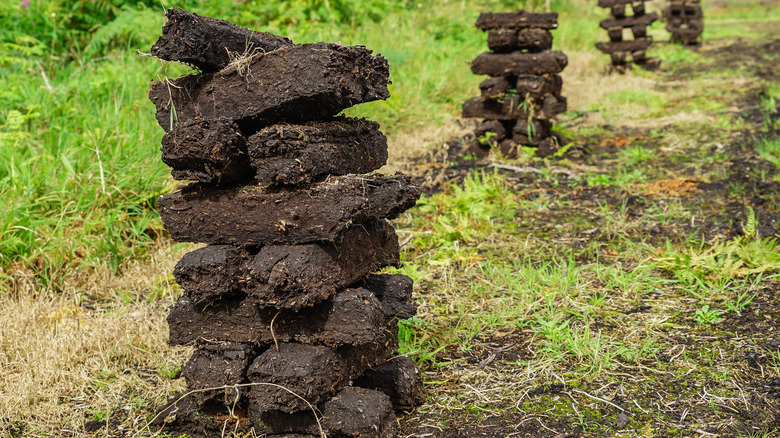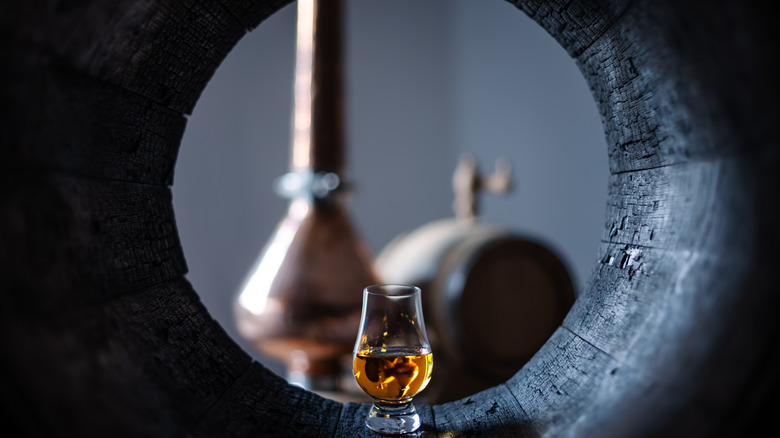The Smoky Ingredient You'll Almost Never Find In Irish Whiskey
It takes a lot of knowledge to fully understand the wide world of whiskey. And it is truly a wide world. What was once considered a uniquely Scottish liquor has since been exported across the globe — America, Canada, Japan, Mexico, and India have all created their own expressions of this spirit over the years.
Arguably one of the most famous, however, is Irish whiskey. Irish monks may have been some of the first to distill their own whiskey during the medieval period. Some of these monks' Scottish counterparts were also making history by creating their own styles at this time, but somewhere along the development of these recipes, the two parted ways dramatically. Scotch whiskey has since become known for its smoky flavor profile, while the best Irish whiskeys have a much more clean, bright flavor. One of the main reasons for this is the absence of one smoky ingredient that defines most Scotch whiskeys: peat.
Peat is responsible for the smoky flavor
For centuries, Scottish whiskey distilleries have been using the same fuel for the malted grains that go into their scotch — peat. Peat is a substance that makes up watery bogs throughout the British Isles. It's made up of dense layers of decaying vegetation like grass and moss that burns well once it's been harvested and dried. At one time, peat was one of the primary sources of fuel in Ireland and Scotland, though modern technologies have helped folks move away from using it as a fuel source.
However, peat is still used today to create the malted grains that go into scotch whiskey. Malting is a process that involves soaking and drying grains like barley to unlock sugars, enzymes, and other ingredients essential to the fermentation process. The last step of this process is known as kilning and involves drying the grains with an intense heat that stops the germination process. In Scotland, this is most often accomplished by burning peat. Peat is used to fuel the kilns, and it infuses the grains with plentiful phenols that give the grains (and therefore the whiskey) a smoky taste.
How Irish whiskey is made
While it was once a more common practice to peat Irish whiskey, it has since fallen out of favor with Irish distillers. Instead, Irish whiskey has become well known for its clean, easy-drinking flavor profiles. This is thanks to the triple-distillation method that is popular with Irish distillers today (Scotch whiskey is typically only twice distilled).
This triple distillation also contributes to the perception that Irish whiskeys don't use peat smoke. It may be true that many Irish whiskey manufacturers prefer kilns that only use heat without the smoke to create their malted grains, but there are some that still use peat in their process. In fact, some distillers like Teeling Irish Whiskey are finding new ways to infuse peat flavors into their whiskeys. These new methods are necessary because the triple distillation reduces the number of phenols (aka the smoky flavor compound) to a level that makes them virtually unnoticeable. Distillers seeking that smoky flavor have had to rely on imported grains with extraordinarily high phenol counts, which get reduced to a pleasing light smokiness after distillation.
While peat might be making a comeback, the vast majority of Irish whiskeys still won't use it in their mash and instead prefer the classic, clean flavors that are now traditional to the island.


